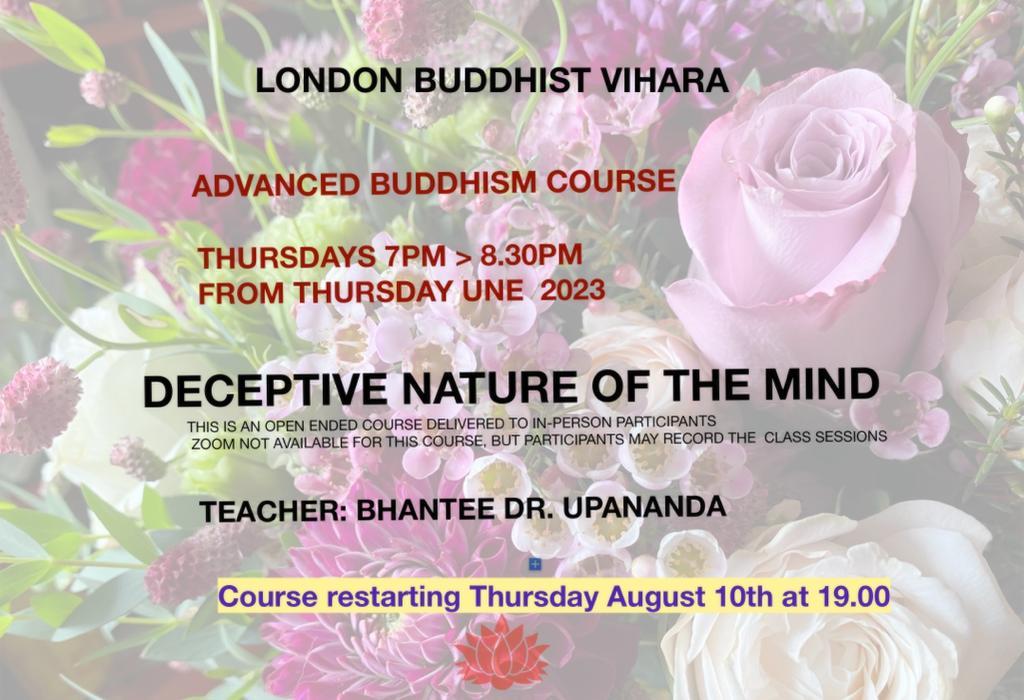Deceptive Nature of the Mind
Audio recordings:
Session 2
Topic: Mara
Session 3/1_100823
Session 4(3/2)_170823
Topic: Hedonist and Ascetic
Session 5(1)
Session 6_310823
Session 7_210923
Session 8_280923Note this class has now ended and will be resumed in January 2024
*********************************
This course is now ended:
Successive Themes in the Buddha-Dhamma
Designed for advanced learners this course will educate participants about the key Pali Buddhist terms essential to understand the pure Buddha-Dhamma. The themes are not prearranged, and once a theme has been fully discussed, the next one will be decided. However, attending every session is highly recommended since all the themes are interrelated.
Mode of delivery: in-person
Venue: London Buddhist Vihara
Dharmapala Building, The Avenue, London, W4 1UD
Class dates: Every Thursday between 7.00 PM and 8.30 PM
Start date: February 9th 2023 (The course will be continuous, and no end date is set). Participants may record the class sessions, and share with friends or post on social media.
Teacher: Bhantee Dr. Upananda
Bhantee is a scholar in Pali, Buddhist studies and comparative religion, and a fully ordained Theravada Buddhist monk. He holds a PhD in American mindfulness studies from the University of Peradeniya, an M.Phil. in comparative religion from the University of Cambridge, an MA in comparative religion from Florida International University at Miami, a higher Master’s degree in TESOL from Northcentral University in California, and a BA in Pali from the University of Kelaniya.
*********************************************
Audio Recordings (MP3)
Class 1_090223
Class 2_160223
Class 3_240223
Class 4a_020323
Class 4b_020323
Class 5_090323
Class 6_160323
Class 7_230323
Class 8_300323
*********************************************
